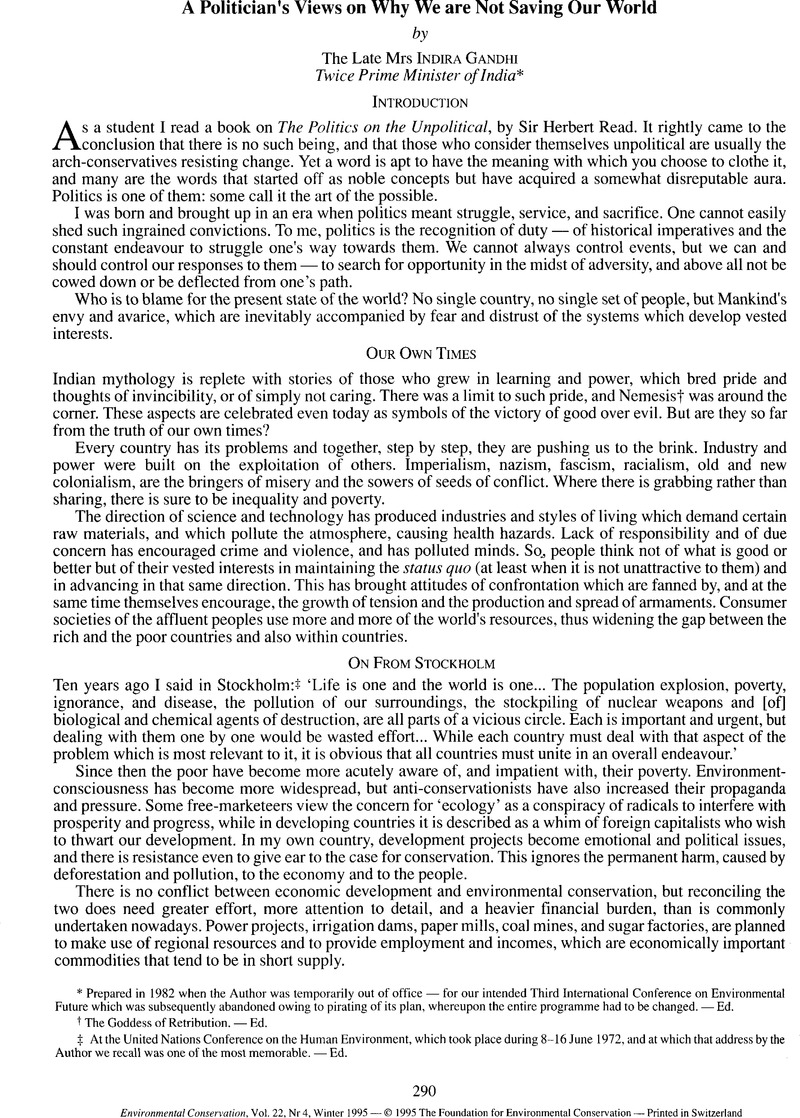No CrossRef data available.
Article contents
A Politician's Views on Why We are Not Saving Our World
Published online by Cambridge University Press: 24 August 2009
Abstract

- Type
- Editorial Section
- Information
- Copyright
- Copyright © Foundation for Environmental Conservation 1995
References
† The Goddess of Retribution.—Ed.
‡ At the United Nations Conference on the Human Environment, which took place during 8–16 June 1972, and at which that address by the Author we recall was one of the most memorable.—Ed.
* See Joshi, Gopa's account of ‘Chipko: A Means of Environmental Conservation’ (Environmental Conservation, 8(1), pp. 3–4CrossRefGoogle Scholar, fig., 1981) and Richard St Barbe Baker's ‘The Story of the First Chipko-hug People (Ibid. 8(3), pp. 226–7, 1981).—Ed.
† See, for example, DrOza's, G.M. ‘Save Silent Valley as a World Heritage Site?’ (Environmental Conservation, 8(1), p. 52, 1981)CrossRefGoogle Scholar, The Sierra Club's International Earthcare Center's ‘Silent Valley to be Saved?’ (Ibid. 9(1), p. 56, 1982), Professor P.S. Ramakrishnan's ‘The Need to Conserve Silent Valley and Tropical Rain-forests in India’ (Ibid. 11(2), pp. 170–1, 2 figs, 1984), and Professor J.S. Singh, Dr S.P. Singh, Dr A.K. Saxena & Dr Y.S. Rawat's ‘India's Silent Valley and Its Threatened Rain-forest Ecosystems’ (Ibid. 11(3), pp. 223–33, 12 figs and 4 tables, 1984).—Ed.
* Or, so far as we yet know, supporting life of any form.—Ed.


